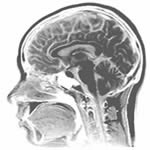|
Intermix.org.uk is a website for the benefit
of mixed-race families, individuals and anyone who feels they have a multiracial
identity and want to join us. Our mission is to offer a view of the mixed-race experience, highlighting icons, film, books, poetry, parenting techniques, celebrities, real lives and much more. Our online forums are a great place to meet others, ask questions, voice your opinions and keep in touch. Sign up for our monthly newsletter and delve into our pages. Want to join in? Become an Intermix member to take part: |
Detecting Prejudice In The Brain
 Study
reveals some seen as less than human.
Study
reveals some seen as less than human.
Three Florida teenagers recently pleaded not guilty to the
brutal beatings and in one case, death, of homeless men. One of the
beatings was caught on surveillance video and illustrates how people
can degrade social outcasts enough to engage in mockery, physical abuse,
and even murder.
According to new research, the brain processes social outsiders as less
than human; brain imaging provides accurate depictions of this prejudice
at an unconscious level.
A new study by Princeton University psychology researchers Lasana Harris
and Susan Fiske shows that when viewing photographs of social out-groups,
people respond to them with disgust, not a feeling of fellow humanity.
The findings are reported in the article Dehumanising
the Lowest of the Low: Neuro-imaging responses to Extreme Outgroups in
a forthcoming issue of Psychological Science, a journal of the
Association for Psychological Science (previously the American Psychological
Society).
In the study, twenty four Princeton University undergraduates viewed
a large number of colour photographs of different social groups (including
Olympic athletes, business professionals, elderly people, and drug addicts),
and images of objects (including the Space Shuttle, a sports car, a cemetery,
and an overflowing toilet) that elicited the emotions of pride, envy,
pity, or disgust.
When the undergraduates viewed pictures that disgusted them such as those
of social outcasts, there was a lack of medial prefrontal cortex (MPFC)
brain activity. The MPFC only showed significant activity when a person
saw or thought about a human being. The authors conclude that this lack
of MPFC brain activity while viewing photographs of people proves that
'members of some social groups seem to be dehumanised.'
The authors describe this as 'extreme discrimination revealing the worst kind of prejudice: excluding out-groups from full humanity.' Their study provides evidence that while individuals may consciously see members of social out-groups as people, the brain processes social out-groups as something less than human, whether we are aware of it or not. According to the authors, brain imaging provides a more accurate depiction of this prejudice than the verbal reporting usually used in research studies.
Source:Medicalnewstoday
